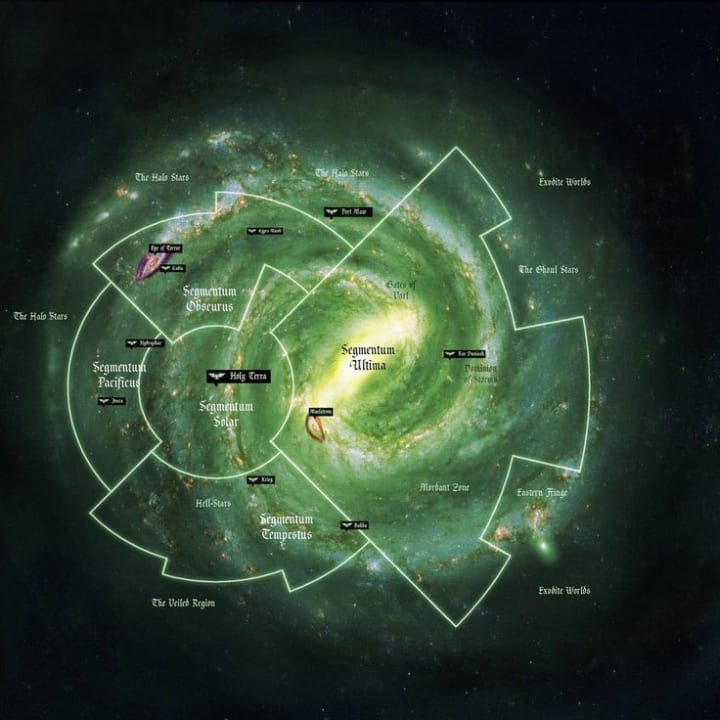The Kardashev Scale
Civilisations on Steroids

Nikolai Kardashev is a little known Russian astrophysicist—certainly in regards to the current phenomena of science-related pop-culture icons, but despite this, some of his ideas have seeped in through the cracks. If the layman recognises his name at all, it won't be for the work that he put into examining the quasar CTA-102, but for the more theoretical exercise of developing what we now know as the Kardashev Scale. Even if you're not familiar with its name, there's a chance that you'll know a bit about its substance: Nikolai proposed the idea that some galactic civilisations would be possibly millions—even billions—of years ahead of us in regards to technology, and developed a scale in order to help with the categorisation of any civilisations that we may come across, or possibly fit into ourselves.
Since its advent in the 1960s the Kardashev Scale has been adapted and expanded on by many people, though no true revisions on the original work have been undergone, as far as I am aware. Obviously, with the research and development of new technology and the boom in the popularity of the science-fiction genre, times have changed and new concepts abound. The original scale works heavily along the lines of power consumption alone being a hallmark of an advanced civilisation, but it is undeniable that there is a lot more to take into consideration when theorising about this sort of thing. While it is true that we ourselves are always looking for new ways to power our civilisation in the most effective and efficient way possible, and are constantly attempting to create devices that do more for less, there is every chance that the continuation of this trend will see a world that survives using a fraction of the energy that we would expect when comparing it to today. Taking this all into account, for the purpose of this article I'll be looking at a more modernised version of the Kardashev scale.
K1 Civilisation

A type one, or K1 (in which the K, understandably, stands for Kardashev) civilisation is one that spans a planet.
This civilisation will have a good mastery of its homeworld, being able to take advantage of most—if not all—of the energy that reaches the world from its parent star. The civilisation will have almost certainly begun the exploration of its home system, but may not have yet colonised any other worlds or moons.
We are close to this today but do fail on a few points: In accordance with the original Kardashev scale, we still have power collecting issues and rely heavily on fossil fuels. Casting our net further afield and taking into consideration more modern versions of the scale, the underdevelopment of third world countries and their stunted economic state is another factor that prevents us from reaching the classification of K1 at this time. There are those who argue that a unified political state would also be a hallmark of K1 civilisation, but this is debatable; it is possible to attribute the scientific and exploratory growth to some of the divisions we have. If we are able to produce enough clean energy to power everything on earth—preferably for free—by the end of this century, there is every chance that the status of K1 will come along with it; with free, clean, energy comes a globally higher standard of living—providing it is handled with the possibly oxymoronic idea of ethical political sensibilities.
K2 Civilisation

A K2 civilisation is one that has spread out to the furthest reaches of its solar system and may have even begun to colonise other star systems. According to Nikolai Kardashev, a key factor of being K2 is that the civilisation has the capability to harness most, if not all, of the power output of a star.
Ways of doing this have been theorised, including the incredibly fun to think about Dyson Spheres or Swarms; structures that encompass the whole star, collecting every bit of energy it produces and then transferring that power to the civilisation that controls it. An equivalent to this could be mastering fusion, something that humanity is currently working on with relatively good success.
The transition between a K1 and K2 civilisation could be quite a quick one on the scale of things. Humanity has been around for about 200,000 years, and if we hit the K1 mark this century the transition between K0 and K1 would be that time period. Roughly speaking, the era of the Roman Empire was 2,000 years ago; a blink of an eye on humanity's timescale. We discovered flight a little over a century ago, and we're about to put boots on Mars now. The point being is that there an exponential increase in the speed at which we, as a civilisation, hit game-changing scientific milestones. It could be mere centuries from the point at which we become a K1 civilisation to when we reach the status of K2.
K3 Civilisation

A K3 civilisation has energy consumption and production on a scale that we can not truly fathom, as well as the technology to go with it: Where a K2 is utilising the power output of entire stars, a K3 is harnessing the output of an entire galaxy. We might not even be able to visually detect the existence of a K3 galaxy if their stars are all encased in Dyson Spheres, just appearing as patches of velvety black through our telescopes. Their heat signatures, though, wouldn't disappear; if we think outside of the box there is every chance we would be able to find them if they are out there.Would a civilisation with the capability to do this actually bother, though? Might they have developed other technologies that would dampen the need for such colossal power consumption? A civilisation that has flawlessly figured out the singularity, for example, could reduce their power needs by digitising themselves thus only needing to provide energy enough to power their computer systems. They'd live in simulated worlds, negating even the need for a planet as their ships falls through space or orbits a brown dwarf. How is that for immortality?So maybe, instead of a galaxy-wide civilisation, a K3 is small, pocket-sized, mature enough to make way for the younger civilisations and their need to expand past the horizon? Maybe this is the way that all civilisations go once they become super-advanced, in the process giving us a possible answer to the Fermi Paradox. Heck, we could even be a K3 civilisation right now, sitting inside a databank, harvesting Hawking Radiation from the universes last black hole, our buddies placing bets on how long it'll take those of us in this specific simulation to click onto the truth of it all.







Comments
There are no comments for this story
Be the first to respond and start the conversation.